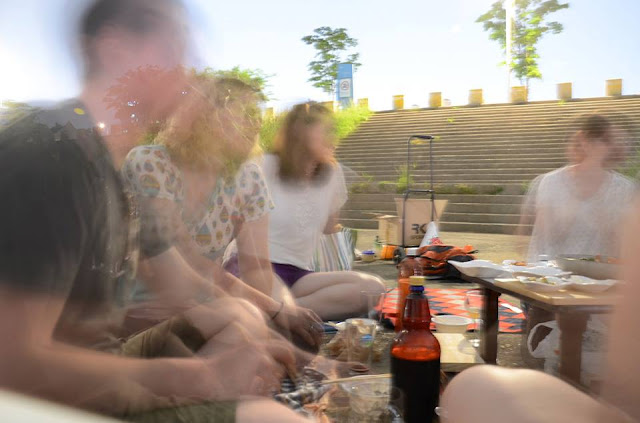THE FOOD
Feta
We had so much success with our Chèvre / Soy Cheese recipe that we thought we would kick it up a notch. Inspired by a recommendation from Travel This we decided on Feta so that we can try more Iranian dishes, especially some of their great breakfast ideas. We googled, checked out a few recipes and made our cheese plan.
THE QUANDARIES
As you may, or may not know. Feta is traditionally supposed to be made from sheep or goats milk so it fits into our dietary restrictions so that worked out great for us. Of course, Feta is a lot more complicated than chèvre so we wanted a better quality milk so we started looking around for a better source including the local organic grocery. However, serendipity stepped in and solved this problem for us.
A local foodie/friend texted mid-week and asked to come over to learn how to learn how to make cheese, of course we jumped on it and said, "OF COURSE!!" Then she mentioned it to a mutual friend who said she'd taken her son on a field trip to a local "green" goat farm and they sold goat milk. Hurray!! We will post a blog about said goat farm next week, for now we are focusing on the cheese.
Of course, feta is much more complicated and part of the complication is the fact that almost all the recipes tell you to put in "cheese culture". Well, we aren't about to find greek cheese cultures floating around rural Korea so that was just not going to happen. After sorting through lots of recipes we decided it could be done without the culture.
Another thing we chose to ignore was all kinds of talk about cheese salt, this salt, and that salt. Screw it, we live in South Korea and we just use this the wicked delicious local sea salt from the local market that costs a dollar. That's what's available so that's what we use.
THE SOLUTION
Mostly we followed this video on YouTube.
We recommend you do too,
but we also made some changes.
After the video, you can read what we did.
NOW FOR WHAT WE DID
3 liters of goat milk
1/2 teaspoon rennet
1/2 teaspoon calcium chloride
6 tablespoons water
Create a double boiler using two kitchen pots and add three liters of milk. Heat it slowly to 30 celsius. This will happen pretty quickly so stay with it.
Cooking Note: If it gets to hot DON'T PANIC if it hasn't curdled just let it cook down by putting the pot in some cool water. You haven't ruined it. Just stay calm and cook it down.
While this is heating, dissolve rennet in 3 tablespoons of water and the calcium chloride in another 3 tablespoons of water.
Add the calcium chloride and stir. Then let it sit for 1 minute.
Add the rennet and stir into the pot. Then let it sit for 1 hour.
After that cut the curd into squares with a knife and stir. Then let it sit for another 20 minutes.
Now your curd will have a nice elastic texture that makes you wish you were making mozzarella.
Pour it out into your cheesecloth lined strainer. During this step, if you drain the whey back into a pot, you can go ahead and make some Ricotta using this recipe:
Tie up your cheese clothe nice and pretty.
Now, put something on top to squish it down for a few hours. Turn it regularly.
While it's pressing you can make the brine. Follow the directions in the video. It works just fine. When it's finished draining it looks like this.
And once you put it into the brine it will look like this.






























0 comments:
Post a Comment